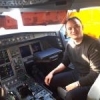
Sign in to follow this
Followers
0

Recreating real life air disasters
By
OmniAtlas, in PMDG 737NGX | 737NGXu


By
OmniAtlas, in PMDG 737NGX | 737NGXu